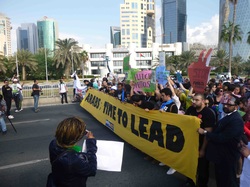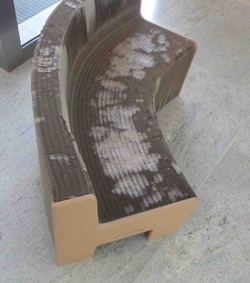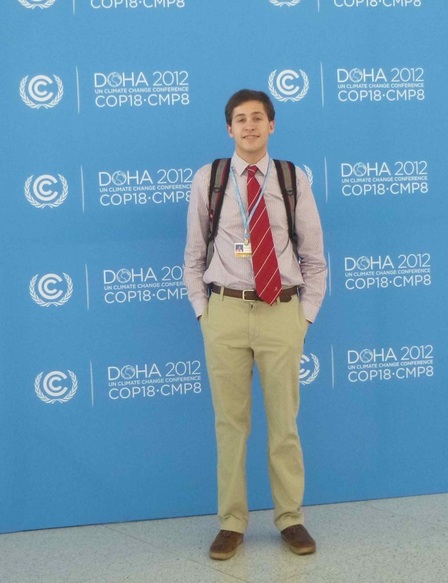While the use of a hybrid bus to bring passengers to and from planes at Doha International Airport is a nice start, I also learned that Qatar leads the world in carbon dioxide emissions per capita (in fact over 2X the per capita emissions of USA). Due in part to the high need for air conditioning, desalination for potable drinking water, and as much lawn care as Central Park (surprisingly Qatar has quite a bit of manicured Bermuda grass with a few scattered palm trees), Qatar is an excellent example of a country that is acting to become more sustainable instead of merely talking. Its efforts in hosting the conference are a gesture that the United States should keep in mind if we aim to stay a leader in environmental legislation and technology development.

The turnout was quite promising among the attendees (close to a thousand if I am being generous), but was even more surprising among local and international news outlets (which I guess includes me now!) This was most likely an even more important aspect of the protest. Hopefully this will echo across the world to the youth of every nation.

The first side session I attended was focused on developing a sustainable transportation network in sub-Saharan Africa. Important people in the field, such as the Director of Transportation in South Africa, Minister of Gender and Development of Liberia, among others were present for the discussion and to share experiences in developing new mass transit networks in the developing continent. While this issue hasn’t impacted CO2 emissions as much as a New York City or Beijing traffic jam, with the increasing urbanization and development of African cities, people are moving from transit by foot to a car in every garage. Leaders of Africa are attempting to break these habits before they set in.
The second side session I attended discussed Lebanon’s aggressive stand on developing renewable energy technologies and utilizing sustainable energy sources. I found the development of Lebanon’s smart grid particularly interesting. They will have electronic monitors on every house in the next 2 years. This allows access to an immense amount of data to continue to help “Smarten” the electronic grid. Lebanon reached its goal of using renewable energy for 12% of its energy needs. Unfortunately, the government has to still subsidize electricity as the use of renewable sources causes the prices to raise. It was estimated that the price was $0.35, but the consumer paid only $0.10 per kW. This touches on a previous blog post by me that I believe Americans will not fully adopt the renewable and environmentally friendly agenda until market forces make the green technologies cheaper.

 RSS Feed
RSS Feed